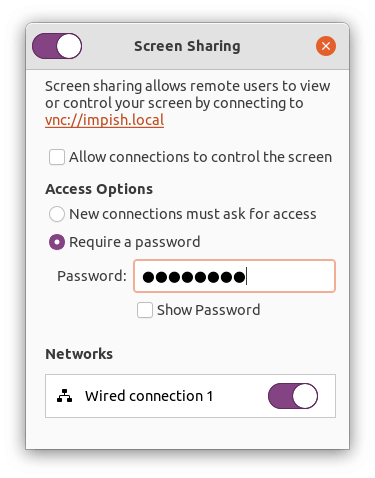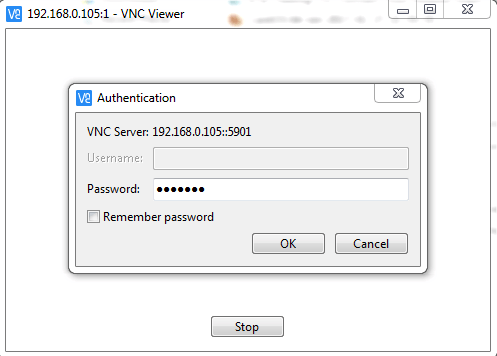

- #Tigervnc client windows install
- #Tigervnc client windows password
- #Tigervnc client windows download
- #Tigervnc client windows windows
Unfortunately I'm still not able to connect. I couldn't generate or convert to PEM format using Window's certificate tools, so I updated the draft instructions to use OpenSSL (see below). Why not use an external Certificate Authority (like Let's Encrypt)?Įxternal Certificate Authorities issue certificates for public domain names but not local network IP addresses. Under Path to X509 CA certificate type the path to the public key file you just copied.Type in the name or IP address of the computer you want to connect to.Copy the public key file ("vnc-server.crt") to your remote computer.Browse to the private key file you saved above. Browse to the public key file you saved above. Under "Session encryption" choose TLS with X.509 certificates.Right click the TigerVNC icon in the system tray (bottom right).If you ever loose the private key, just create a new certificate and private key. If you have syncing services (such as OneDrive, Dropbox, etc.), consider saving to a location that isn't synced or backed up. The private key should remain private to your computer.
#Tigervnc client windows windows
In Windows File Explorer go to the location you saved both files.Choose Save private key and use a file name like "vnc-server-private.key".Choose Save public key and use a file name like "vnc-server.crt".Follow the instructions onscreen (like moving your mouse randomly).On the computer with the TigerVNC server:
#Tigervnc client windows download
However, you can download a tool to do the job. Unfortunately TigerVNC doesn't understand Windows-style certificates saved in the Windows certificate store or that end with the file extension. Create a certificateįollow the steps for your operating system. However, they are also useful for securing TigerVNC.

"X.509" is a standard type of certificate commonly used for websites. Certificates keep private the contents of the communication between you and the remote computer.Certificates prove the identity of the computer you are viewing (the one with the TigerVNC server).Making the connection secure What is a X.509 certificate?Ĭertificates allow three important security functions. I'll post these instructions on the wiki once I get a secure connection working. I'm getting "Authentication failure: authentication failure: Error loading X509 certificate or key". I wrote up draft instructions (below), however haven't quite figured it all out. Password: (password you set up on the server, or leave blank if you want it to ask you every time).Server: (name/IP address of computer on your local network).Protocol: VNC (Virtual Network Computing).

If you use another viewer, here's some setting to check: Using TigerVNC's viewer on the remote computer is recommended.
#Tigervnc client windows password

In the task bar (bottom right), choose the up arrow to show more task icons, then right click on the TigerVNC icon and choose Options.
#Tigervnc client windows install


 0 kommentar(er)
0 kommentar(er)
